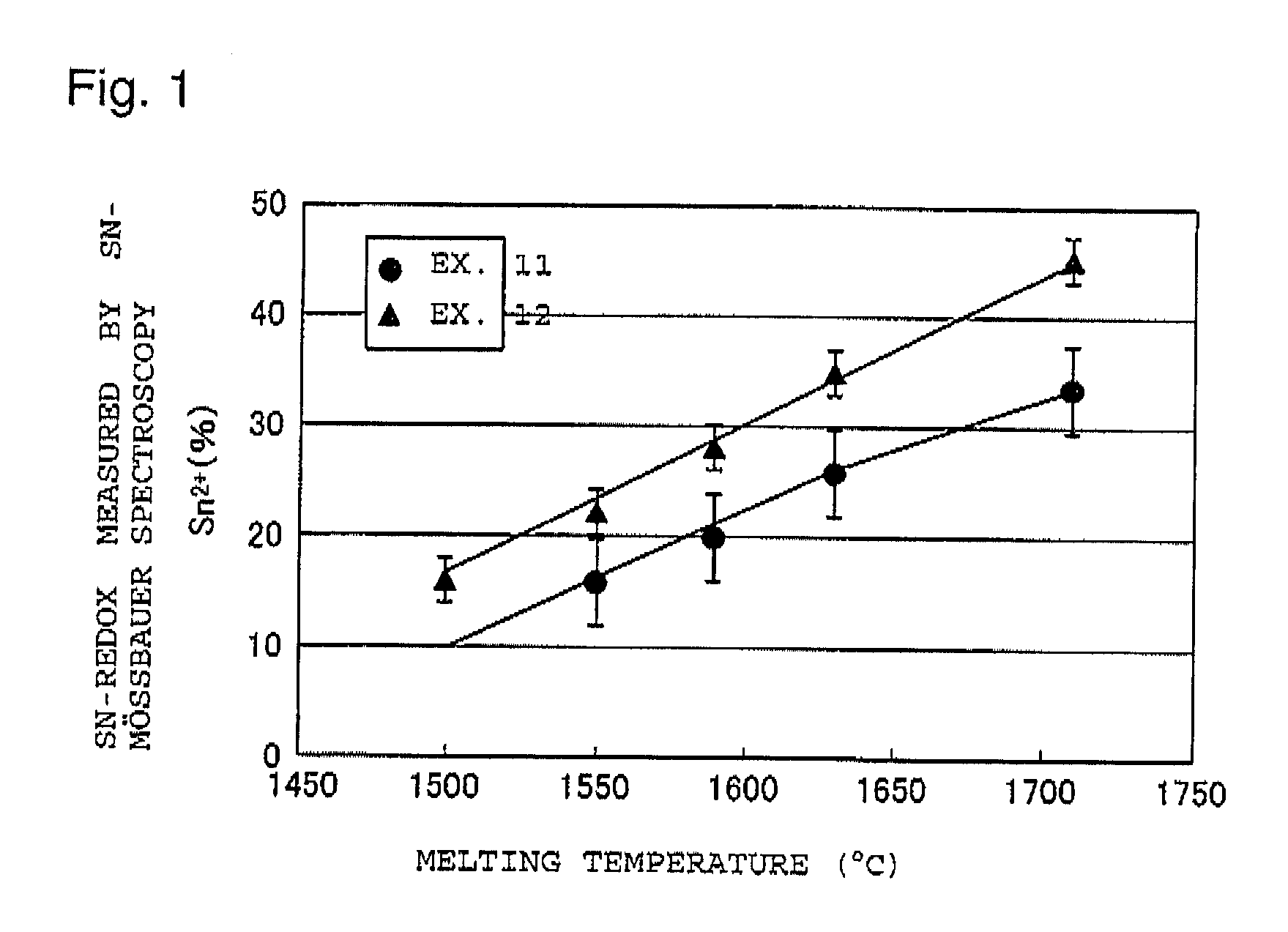Process for producing alkali free glass and alkali free glass plate
a technology of which is applied in the field of process for producing alkali free glass and alkali free glass plate, can solve the problems of large number of defects per glass substrate, the problem of distinct decrease in yield, and the mention of bubbles as defects, etc., and achieves the effect of small thermal expansion coefficient and few bubbles
- Summary
- Abstract
- Description
- Claims
- Application Information
AI Technical Summary
Benefits of technology
Problems solved by technology
Method used
Image
Examples
examples
[0054]In Table 1, with regard to components prepared as an industrial glass starting material, and in Table 2, with regard to a glass obtained, the contents of respective components per 100% of the total amount of the matrix composition comprising SiO2, Al2O3, B2O3, MgO, CaO, SrO and BaO are represented by the mass percentage.
[0055]Examples 1 to 4 and Example 6 show Examples of the present invention, and Example 5 shows Comparative Example.
[0056]The starting material having the composition shown in Table 1 was put into a platinum crucible and melted under heating at a temperature of from 1,500 to 1,650° C. Then, a molten glass was cast on a carbon plate so as to form a plate. Then, each of 20 g of plate glasses was put into the platinum crucible, and melted under atmospheric pressure (760 torr) at 1,420° C. for 4 hours, and then annealed to obtain the glass shown in Table 2.
[0057]With regard to the glass plate obtained, the volume of bubbles, Sn-redox and amount of each remaining co...
PUM
| Property | Measurement | Unit |
|---|---|---|
| Temperature | aaaaa | aaaaa |
| Temperature | aaaaa | aaaaa |
| Temperature | aaaaa | aaaaa |
Abstract
Description
Claims
Application Information
 Login to View More
Login to View More - R&D
- Intellectual Property
- Life Sciences
- Materials
- Tech Scout
- Unparalleled Data Quality
- Higher Quality Content
- 60% Fewer Hallucinations
Browse by: Latest US Patents, China's latest patents, Technical Efficacy Thesaurus, Application Domain, Technology Topic, Popular Technical Reports.
© 2025 PatSnap. All rights reserved.Legal|Privacy policy|Modern Slavery Act Transparency Statement|Sitemap|About US| Contact US: help@patsnap.com

